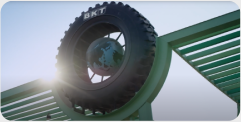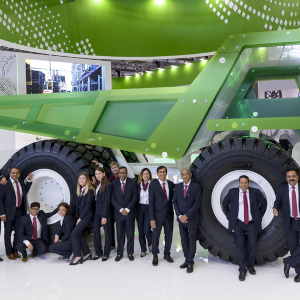Agricultural machinery relies heavily on specialised tyres to navigate challenging conditions. Manoeuvring through mud, debris, and sticky substances poses a significant challenge, potentially hindering the efficient completion of farming operations. However, with strides in agricultural tyre technology, new models now boast self-cleaning capabilities, actively tackling these obstacles and optimising overall efficiency. In this article, we will explore the mechanisms by which agricultural tyres self-clean and the invaluable benefits they bring to the industry.
Understanding Self-Cleaning Mechanisms
Self-cleaning in agricultural tyres refers to their ability to shed mud, dirt, and debris during movement. This is possible through intentional design features that facilitate debris removal, ensuring optimal traction and preventing undesirable build-up. The tread patterns and overall tyre design are the key contributors to this self-cleaning ability.
Tread Patterns
Agricultural tyres boast intricate tread patterns crucial for efficient self-cleaning. These patterns include grooves, lugs, and channels strategically positioned across the tyre surface, creating spaces where debris can be collected and expelled as the tyre rotates.
Lugs: Raised sections on the tyre’s tread, providing traction and channels for mud and debris to escape the tyre’s contact area.
Grooves: Deep, narrow channels carved into the tyre’s tread, enhancing grip on the ground while allowing accumulated debris to be pushed out. They prevent mud and other substances from getting trapped.
Void Ratio: The amount of open space in a tire’s tread. A higher void ratio means larger spaces between lugs and grooves, aiding effective debris removal.
Tyre Design Elements
In addition to tread patterns, specific design elements contribute to the self-cleaning capabilities of agricultural tyres.
Tyre Width: Wider tires distribute the load over a larger surface area, reducing mud accumulation, preventing slippage, and ensuring better traction.
Flexibility: Tyre flexibility under load helps force out accumulated debris through the gaps between lugs and grooves, which is especially beneficial in sticky soil conditions.
Sidewall Protection: Designed with protective ribs or bars, preventing mud accumulation in this area, which can cause imbalance and reduce performance.
Benefits of Self-Cleaning Agricultural Tyres
-
Improved Traction: Efficient self-cleaning ensures optimal traction, reducing slippage and enabling machinery to navigate challenging terrains easily, ultimately enhancing operational efficiency.
-
Reduced Downtime: Self-cleaning tyres minimise the need for frequent manual cleaning stops, allowing farmers to work uninterrupted and maximise operational efficiency.
-
Increased Fuel Efficiency: By preventing excessive build-up, self-cleaning tyres reduce rolling resistance, improving fuel efficiency and contributing to environmental sustainability.
-
Enhanced Durability: Self-cleaning tyres prevent premature wear and damage, maintaining the integrity of the tread and reducing the need for frequent tyre replacements.
-
Improved Safety: Efficient self-cleaning ensures better stability and control during agricultural operations, minimising the risk of equipment slippage, skidding, and accidents.
Self-cleaning agricultural tyres transform farming equipment by efficiently tackling mud, debris, and sticky substances. These tyres improve traction, fuel efficiency, durability, and safety, minimise downtime, increase operational efficiency, and boost overall productivity and profitability for farmers. We can anticipate even more enhanced self-cleaning capabilities as technology advances, empowering farmers to overcome obstacles and maximise their agricultural potential.
Check out our other advanced tyre collections here.






